Woody Allen, Jesse Eisenberg, Steve Carell, Kristen Stuart and Vittorio Storaro on Café Society
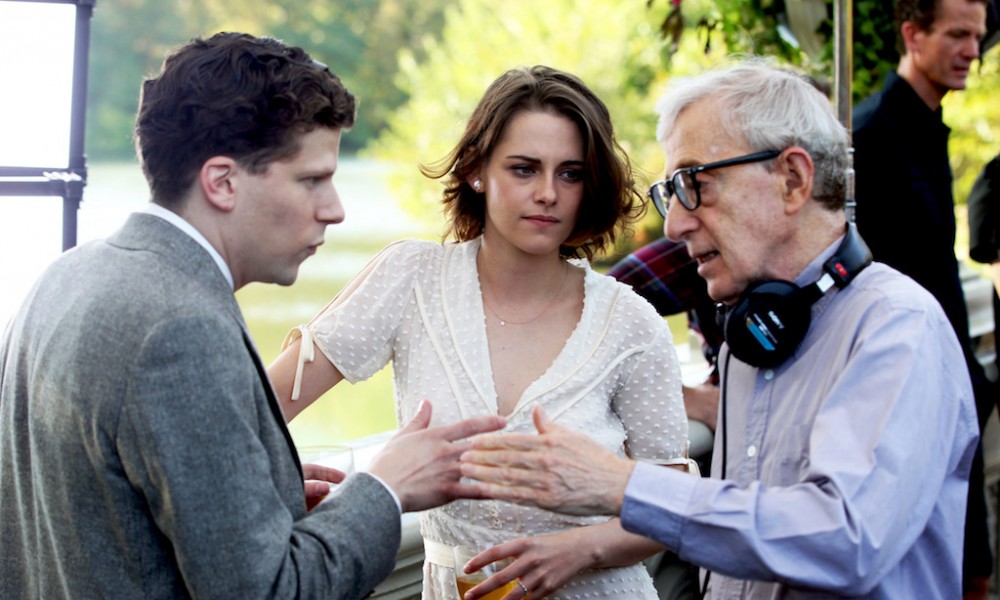
Woody Allen’s Café Society is a panoramic tale of 1930s New York and Hollywood with a kaleidoscopic cast of characters that range from movie stars to millionaires, playboys to professors, and working girls to wise guys. Here’s a chat with the director; actors Jesse Eisenberg, Kristen Stewart, Steve Carell, Blake Lively; and the great masters behind the cinematography and set design.
The director explains the film’s broad scope was integral from the start.
“When I wrote the script, I structured it like a novel,” says Allen. “As in a book, you stop for a little while in this movie and see a scene with the protagonist with his girlfriend, a scene with his parents, followed by a scene with his sister or gangster brother, a scene with Hollywood stars and wheeler-dealers, and then the Café Society with politicians, debutantes, playboys, and the people cheating on their wives or shooting their husbands. To me it was always a story not of one person but of everybody.”
Within the sweep of the movie is the story of Bobby Dorfman, a Bronx boy whose ambitions take him to Hollywood and back again to New York. “Bobby’s love story is the armature that the lm is hung on,” says Allen, “but all these other characters make up the atmosphere and fabric of the story itself.”
As in a novel, the movie’s story is related through an authorial voice, so Allen decided it would be appropriate for the film to have narration, and to take on that job himself. “I put myself in because I knew exactly how I wanted the words to be inflected, he says. I figured that since I wrote the book, it would be like I was reading from my novel.”
“Café Society” refers to the socialites, aristocrats, artists, and celebrities who gathered in fashionable cafes and restaurants in New York, Paris, and London in the late 19th and early 20th Century. The term became popular in New York City in the 30s, after the end of Prohibition and the rise of the tabloid journalism that avidly covered the denisens of Café Society. There were dozens of dazzling clubs in New York City at the time, including some with 50-piece orchestras. Every night the glitterati donned tuxedoes and gowns and made the circuit from Greenwich Village jazz spots to legendary midtown venues like El Morocco, to 142nd Street in Harlem, site of the Cotton Club. “That era has always fascinated me,” says Allen. “It was one of the most exciting times in the history of the city, with tremendous theatre life, café life, and restaurants. Up and down the line, wherever you were, the whole island was jumping with nighttime sophisticated activities.”
Golden Age Hollywood also had its haunts for the rich and famous, but their nightlife was markedly different from the one in New York. “It was the glamour of the Cocoanut Grove and the Trocadero,” says Allen. “There weren’t many places to go to, the hours were earlier, the clothes were lighter, and everyone was driving their cars places. There was a certain amount of it that was very glamorous because they had the movie stars, but New York had a certain all night sophistication that Hollywood didn’t have.”
In addition to being a portrait of an era, Café Society is a family saga. Bobby’s father Marty (Ken Stott) is a gruff but deeply moral man who owns a modest jewelry store in the Bronx. His wife Rose (Jeannie Berlin) is always ready with negative assessments of his mental capacity and other failings. “She feels, probably inaccurately, that with a different husband she might have had a better life,” says Allen. “They fight all the time, but they’re very committed to each other and they love each other – it’s just a different kind of demonstration of it. They would be right there at the hospital bed if anything happened to either one of them.”
Ben (Corey Stoll), the oldest of the three Dorfman children, is a gangster. “Ben sees that his father could never afford anything and was always struggling, says Allen. He got in with the gangs, found jobs that paid good money, but were not legal, and found that there was a very lucrative and glamorous life to be led outside the law.” While Ben has strayed ethically from the family, his devotion to his relatives doesn’t change – he is always around for family events and available to help everyone. Evelyn (Sari Lennick), the bright middle sister, becomes a teacher and marries Leonard (Stephen Kunken), a professor, and pursues a more cerebral life. Leonard, while something of a egghead, is a principled man who adores Evelyn. As the story begins, Bobby (Jesse Eisenberg), sets out for Los Angeles, hoping for something more interesting than working in his father’s jewelry store. Working for his mother’s high-powered agent brother, Phil Stern (Steve Carell), seems much more promising. “Bobby starts the movie as an almost blank slate, a kind of naïve dreamer who thinks he can go to Hollywood and will be swept up by a welcoming industry, says Eisenberg. Of course that’s not what happens. But he thinks that he wants something more exciting and he is part of a generation and a culture that made that dream feel like it was possible, especially because he had an uncle who did it. As he is exposed to the real world, both the beauty of it and the struggle, he self-actualises in a sweet and awed way.”
Bobby’s uncle Phil is a high-energy mover and shaker who is on a first name basis with many of the biggest stars in Hollywood, but is slow to recognise his own sister’s voice on the phone. “When you first meet Phil, he’s very formidable, says Carell. He’s always multi-tasking, always has a call and a meeting going on at the same time, and he embraces that role fully. But the more you see him, you realise he has a softer and more vulnerable side, and that he has a decency – he doesn’t make decisions at the expense of other people’s feelings. I think this makes him more human and more endearing.”
As Bobby is new to LA, Phil asks his assistant, Vonnie (Kristen Stewart), to show him around town. After she takes him on a tour of movie star homes and shares her experiences and opinions about Hollywood, Bobby is immediately smitten. “Vonnie is an ambitious, fresh girl who is completely aware of the surface nature of the business she’s in, says Stewart. It’s fun and exciting, but there’s also an emptiness she sees – and that gives her charm.” Says Eisenberg: “I think both characters are constantly attracted to and resisting the allure of the glitzier side of the city of entertainment. But Vonnie provides a wonderful antidote for Bobby. She is cynical, funny, and seems to have a real world perspective.” Unfortunately, Vonnie has a boyfriend, and he must settle for her friendship.
While in Los Angeles, Bobby befriends two fellow New Yorkers, Rad Taylor (Parker Posey), a vivacious woman who owns a modeling agency, and her wealthy producer husband Steve (Paul Schneider). Steve invites Bobby to a screening of one of his movies at their home, and Bobby gets his first taste of what a life in Hollywood might hold for him.
When Vonnie’s boyfriend abruptly breaks up with her, Bobby seises the opening to romance her, and eventually she returns his affections. While he is starting to move up the ladder at Phil’s agency, he comes to the conclusion that Los Angeles is not for him. He asks Vonnie to marry him and come back to New York and lead a bohemian life in Greenwich Village. Vonnie seems on the verge of saying yes when her ex-boyfriend comes back into the picture. Although she loves Bobby, she decides on her ex-boyfriend instead, leaving Bobby devastated.
Returning to New York, Bobby goes to work for big brother Ben, who has taken over a nightclub called “Club Hangover.” Bobby quickly proves a smooth operator, naturally able to work a crowd, with an instinct for how to attract the brightest members of Café Society to the club. Rad convinces him to remodel and change the club’s name to the more chic-sounding “Les Tropiques.” Soon the place is teeming with socialites, celebrities, politicians, and playboys, and Bobby roams freely among them, the genial host of the never-ending party.
One night, Rad introduces Bobby to Veronica (Blake Lively), a socialite whose husband has just left her for her best friend. “Veronica is definitely hurt and a little damaged by what happened, but she’s not yet jaded by the world, says Lively. There’s a purity about her that’s refreshing, in the way she hears about Bobby’s heritage and she meets it with curiosity rather than judgment. She has an openness that removes any of the social and political boundaries that were prevalent back in those days.”
Veronica is quickly won over by Bobby’s charm and confidence, and after a whirlwind courtship, she tells him that she’s pregnant. While Bobby still hasn’t gotten Vonnie out of his head, he proposes, and they marry. “Veronica was a really interesting character to take on because this film is a love story, and you’re really rooting for the two people at the heart of the love story, says Lively. Then Veronica comes in, and you’re supposed to like her but also want the two original lovers to be together again. You really root for her, and at the same time you root for them. It was a neat character to play to come in and shake things up a bit.”
Meanwhile, Evelyn and Leonard are struggling with a surly next-door neighbour who is becoming increasingly threatening. Leonard’s mild attempts to resolve their conflicts in a reasonable way only seem to make the situation more volatile. Concerned for Leonard’s safety, Evelyn asks Ben to speak to him, a request she will later regret.
Having worked with many of the world’s greatest cinematographers, Allen teamed for the first time on Café Society with three-time Academy Award winner Vittorio Storaro. “The cinematography in a film to me is very important in my telling of the story and Vittorio is a superb artist,” says Allen. In a first for both of them, they shot the film digitally. Storaro had experimented with digital cameras for years, and he felt that the technology had advanced to a level where the results satisfied him. The two worked closely together to give diverging aesthetics for the three worlds of the film. “In the Bronx, it is a desaturated, almost winter-like evening light,” says Storaro. Los Angeles was the opposite: “In Hollywood there is a very strong primary color in a warm tonality, very sunny, he says. After Bobby returns to New York, everything is much brighter, and everything is much more colorful, particularly the scenes done in the nightclubs. As the film moves on, there’s more balance between the visual elements in the two opposite cities. That’s something that I love to add all the time: parts that are opposite visually at the beginning, but step by step get closer, until they connect to each other.”
While the film is generally shot with static images and wider angle shots appropriate to the period, Storaro and Allen utilised a Steadicam whenever the narrator was speaking. “The narrator doesn’t belong to any period, to any time, any geographic place,” says Storaro. “The narrator is completely abstract. So when the narrator is telling the story, we felt that the narrator should have his own view. We decided that this would be a great moment to use the Steadicam, in order to be much more around the character, much more free to tell the story according to the emotional story itself.”
Both Club Hangover and Les Tropiques were built on the same Manhattan sound stage. The biggest element in the changeover was the walls, which were crafted by production designer Santo Loquasto so that large panels could easily be removed and swapped. “I modeled the clubs after the movies of the period as well as pictures from the actual places, says production designer Santo Loquasto. Over the years, we’ve accumulated a library of references for that world – we even shot in El Morocco for Radio Days. I used elements of things I remembered Woody liked in scouting over the years, like the spiral staircase and the way the bar is laid out. When I work, I always have to acknowledge that it’s Woody’s view of this world more than it’s a recreation. I always say it’s a recollection, it’s not a recreation, which is really the truth of it. He always worries if we obsess about accuracy in the decor that we’ll seem fussy in a way that doesn’t appeal to his eye.”
The film’s opening scene was shot by the pool of a home once owned by Hollywood star Dolores del Rio, pictures of which Loquasto had loved when he saw them in a book on Los Angeles. Loquasto sent the location department photos, and fortunately they were able to find it. The house epitomises the contrast between Los Angeles and New York that Loquasto was going for. “While the New York club was black and white and red”, says Loquasto, “the Dolores del Rio house had the pool and the white house and the green grass, and very beautiful silver and aqua furniture of the period.”
Costume designer Suzy Benzinger’s work illuminated the differences between New York and Hollywood glamour. “Hollywood was built on an incredibly fake world that was created to drive millions of people to movies,” says Benzinger. “It was very important for them to make the starlets glamorous – they dressed them every time they exited their homes. We’ve all seen these pictures of Hollywood premieres in the 30s where the ladies are wearing these fur coats with orchids on them. And when you look at the date of these premieres, they’re in August, when it’s a million degrees in California. In New York, it’s more realistic: It’s cold outside, so women come in with hats.”
New York style had a different feel because people, influenced by the heady cultural life that was swirling around them, were buying the tuxedos and couture fashion themselves. “New York women were a little more European, a little more chic than the women in California,” says Benzinger. This was the time when all these French designers were appearing in New York, and among the ladies there was a huge competition with Chanel and Schiaparelli.” As she couldn’t rely on the mostly black and white pictures of the era, Benzinger had to resort to other techniques: “I would read articles from 30s fashion magazines that said things like ‘This is the hot color from Paris!’” she says.
Eisenberg, a writer and soon-to-be director himself, who previously appeared in Allen’s To Rome With Love, describes working with Allen as both challenging and fulfilling. “It’s nerve-racking because you are not going to spend all day on the same shots, and so if you feel like you didn’t get it exactly the way you wanted, it’ll still be in the movie, he says. But it’s also a relief to realise you are being watched and corrected by somebody who is able to focus on whatever it is that’s most important in a given scene, and highlight it in the most efficient, clear, and artful way.”
Steve Carell appreciated that Allen didn’t do a lot of takes: “When you do too many, you can start over-thinking it, and that’s when you can come up with artificial moments or reactions. I think he loves immediacy and I think it pays off.”
Kristen Stewart felt that Allen pushed her outside of her comfort zone. “There’s a buoyancy and a levity to Vonnie’s personality that I just don’t easily encompass, she says. And so he was really on me about that and forced me to lighten up and nd that sort of airy nature.” Lively says that Allen was never overbearing or intrusive, and yet always there when she needed him to be. “He doesn’t give you line readings exactly, she says. He’ll say ‘The mood should be a little like…’ and then he’ll say a line. And it will completely change your idea of what the line should be.”
Carell believes that Allen’s approach to directing is grounded in an appreciation for actors and their work: “I think he respects actors so much that he assumes that they will come in prepared and that they will do their job. He leaves the acting up to the actors. So unless you have a question or unless he has a concern, it’s very simple – if it’s working, you don’t really hear anything.”
Stewart felt she needed little guidance because the script made her character so clear: “Rather than him explaining what it was about, I spent most of my time convincing him: ‘Oh man, I know this moment! I really want you to know that I’m not just acting this; this is something that I have experienced.’ And he was always surprised by that.”
Blake Lively: “What I liked about the script is that each person has their own reason for being worthy of being loved very well, and yet they’re each treated differently. Some are loved less, some are loved more, and not for any reason. It’s just an emotional, chemical thing. In love it doesn’t mean that any one person is better than the other – it’s just who makes your heart beat faster.”
The love story at the heart of Café Society is bittersweet. The characters wonder about the choices they have made and the paths their lives have taken. “Life is like putting together a huge mosaic – but you only get to see one little stone at a time, you don’t get to see the big picture,” says Stewart. “You’re responsible for the decisions you’ve made, but your decisions weren’t fully informed. There’s a ‘what-if’ at play during this whole movie that drives me crazy, because that’s life – you always wonder if the decisions you’ve made were the right ones.”
Steve Carell says: “What you think is your ultimate dream might not necessarily be so. There can always be a yearning and a dream beyond the one that you have at hand.”
“It’s just choices that people make in life,” says director Woody Allen. “Things work out for Bobby and Vonnie to some degree, but they still dream about each other and it’s not going to happen. If Vonnie had made a different decision earlier, they’d be together. But the way things are, they can only be together in their dreams.”
The editorial unit

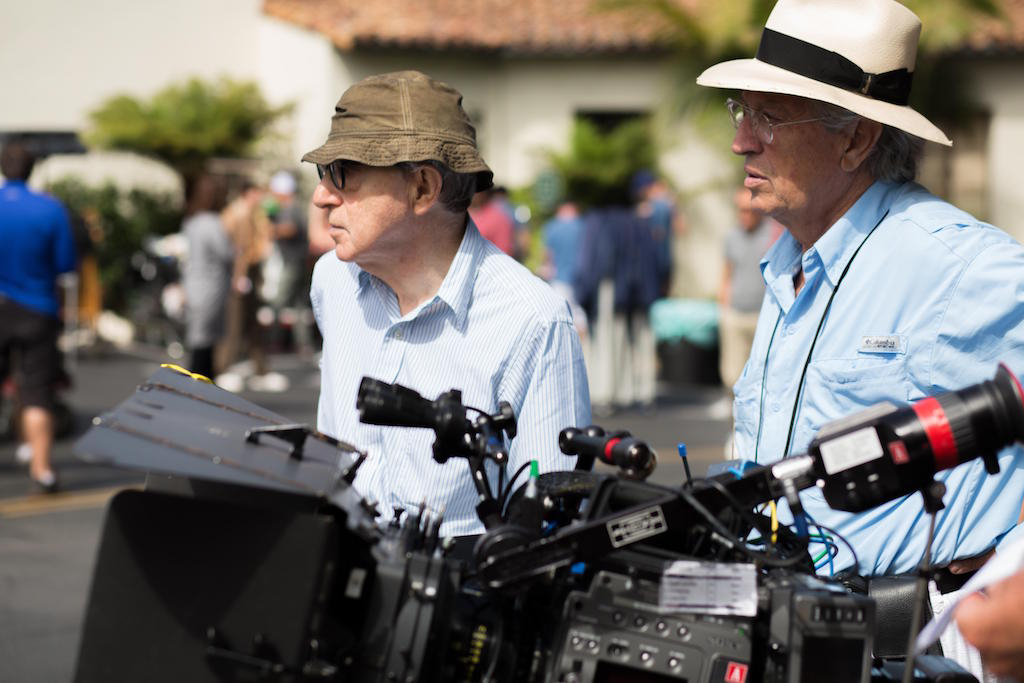
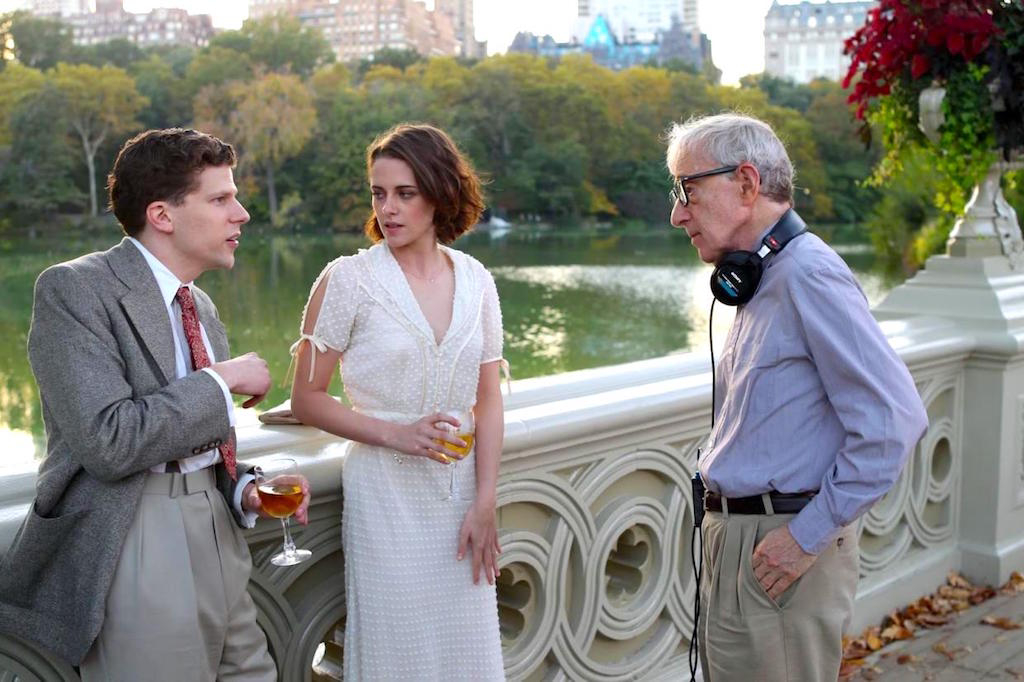
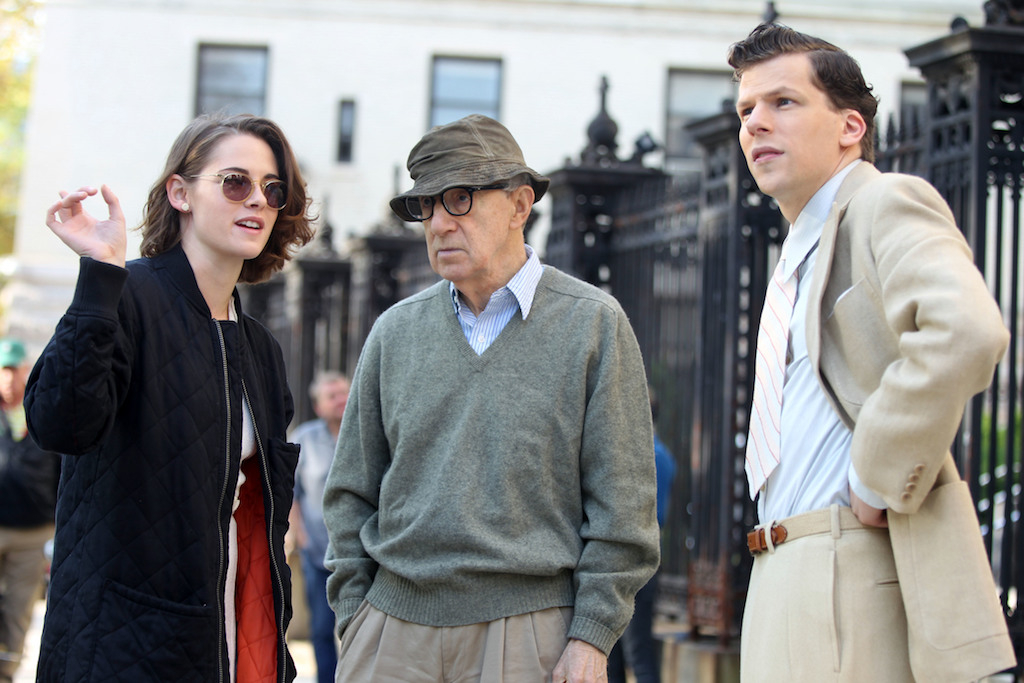
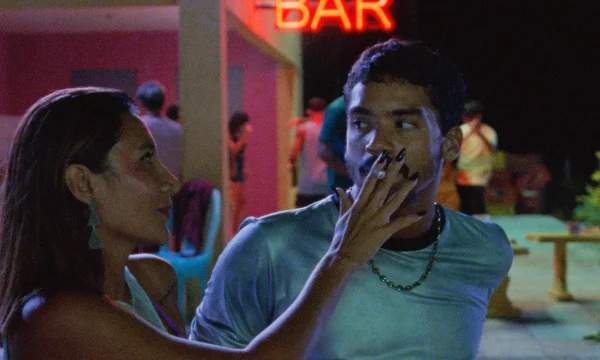
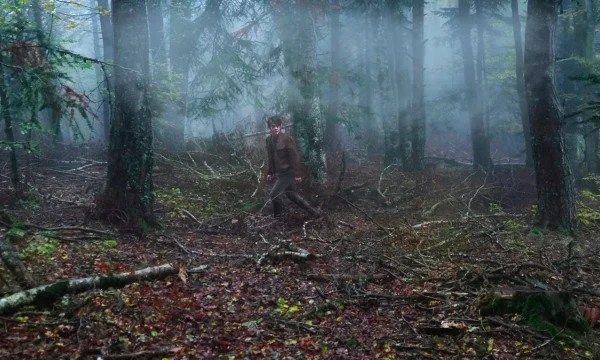
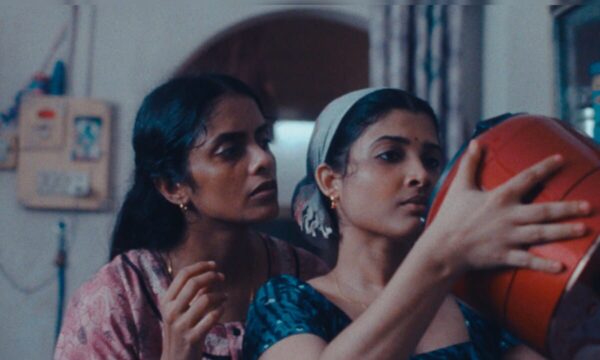
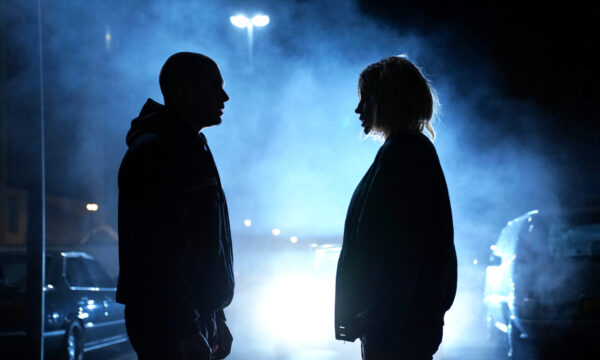
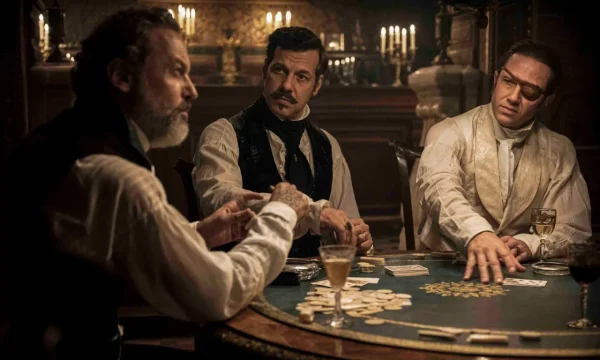
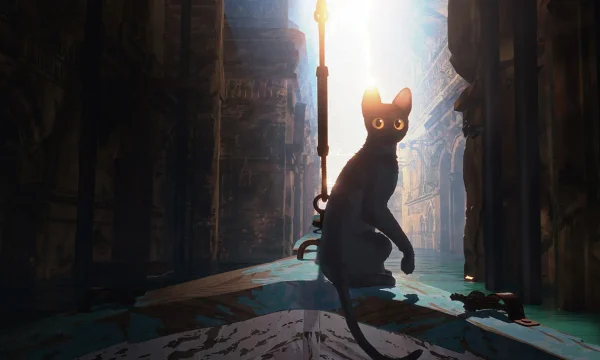
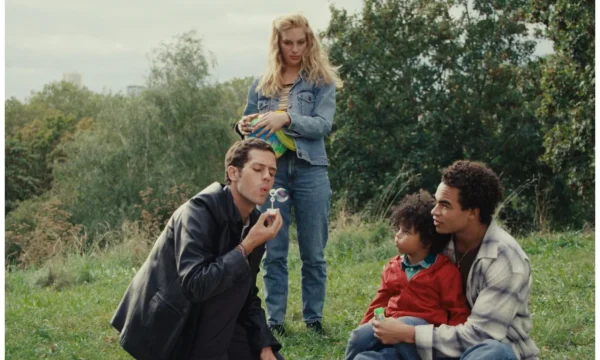
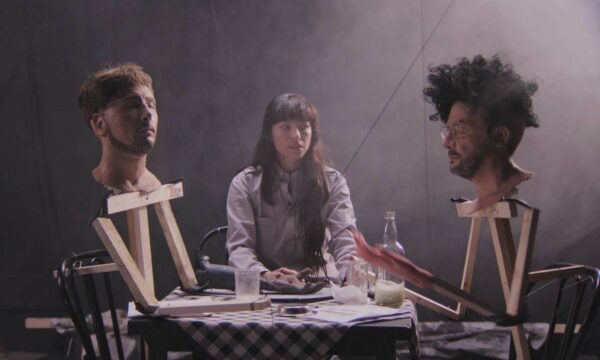
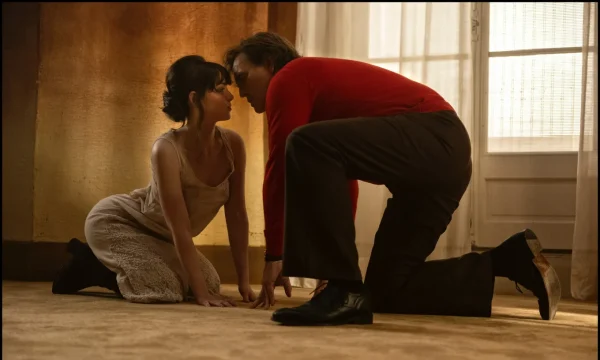








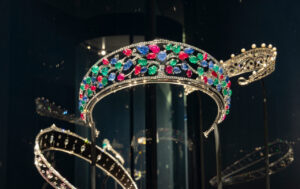
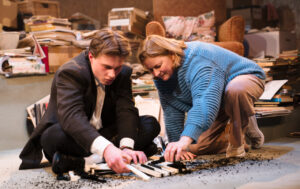





Facebook
Twitter
Instagram
YouTube
RSS